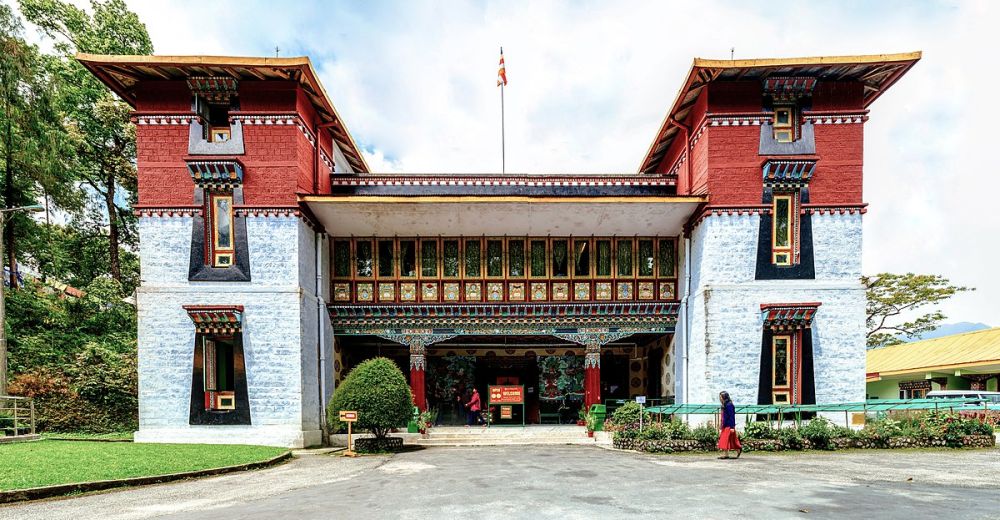

The Namgyal Institute of Tibetology has been an important center for the study of Tibetan culture and Buddhism since its inception. Located amidst the serene Himalayan backdrop in Gangtok, the capital city of Sikkim, it is not only a repository of vast collections of Tibetan works, artifacts, and relics but also a testament to Sikkim's historical bond with Tibetan culture.
The Institute was established in 1958 and was officially inaugurated by the 14th Dalai Lama on October 1, 1958. Named after the late Chogyal (King) of Sikkim Sir Tashi Namgyal, the Institute stands as a tribute to his vision of preserving and promoting Tibetan culture and Buddhist studies. Over the years, it has emerged as one of the world's foremost centers for Tibetan studies, attracting scholars and visitors from across the globe.
The institute's traditional Tibetan architecture is a marvel in itself, distinguished by its vivid murals, intricate wood carvings, and a towering golden hued-steeple which is an attraction for tourists and devotees. It was designed by the late Nari Rustomji, an eminent architect, reflecting a unique blend of Tibetan and modern styles.
The Institute houses an impressive library with over 60,000 manuscripts, numerous statues, thangkas (Tibetan scroll paintings), and other rare artifacts. The museum attached to the institute provides a deep insight into Vajrayana Buddhism and showcases ritualistic objects, relics, and the diverse cultural heritage of the Tibetan plateau.
With Sikkim modernizing rapidly since its incorporation into India in 1975, the Namgyal Institute of Tibetology has become more accessible to international and local tourists. The state capital, Gangtok, has evolved from a remote town to a bustling city, with improved road connectivity, regular helicopter service, and the introduction of the Pakyong Airport in the vicinity.
The latest trend in tourism around the Institute emphasizes sustainable and educational travel experiences. Tourists are increasingly looking for authentic cultural engagements such as participating in Tibetan language courses, meditation sessions, and attending lectures on Buddhism. Moreover, with the growing interest in Himalayan ecology, tourists also engage in nature-oriented learning while visiting the Institute.
The Institute welcomes tourists and scholars throughout the year. It generally operates from Monday to Saturday, barring local holidays and special events. Photography is permitted in the museum but may be restricted in certain areas. Visitors are reminded to respect the tranquility and sanctity of the location while exploring its vast cultural wealth.
The Namgyal Institute of Tibetology has significantly contributed to the cultural tourism of Sikkim. Its presence has accentuated the importance of Sikkim as a destination rich in culture and spirituality. The Institute's continued engagement with scholars and tourists alike has played a crucial role in promoting understanding and preserving the unique heritage and traditions of Tibetan Buddhism.
For those looking to enrich their knowledge of Tibetan culture and history, a visit to the Namgyal Institute of Tibetology is a journey into the heart of Himalayan wisdom and artistic expression.